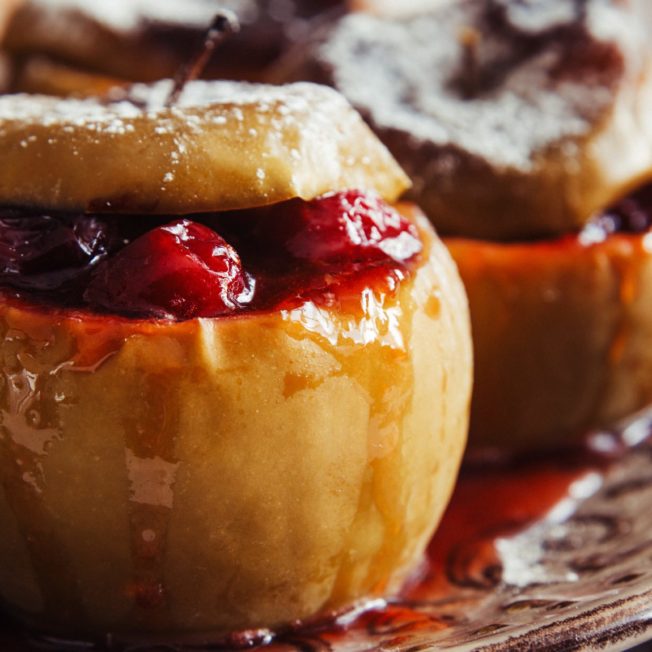We’re creeping closer to the heart of the holiday season, a time full of tried-and-true traditions. Soon, we’ll deal with another change of the seasons as the temperatures continue to cool and change what’s available at our local farmer’s market (or what we can grow in our backyards). This allows us to change our routines in the kitchen and get creative with our recipes.
What’s in season now?
Across the United States, we may experience varying climates, affecting what produce is available and accessible in each region. While the crop in season in your area might differ this month, we’re sharing some options for seasonal eating in November to inspire in the kitchen. Here’s a list of just some of the fruits and vegetables this month, along with some recipe ideas to test out using these fresh seasonal ingredients.
Cranberries
Cranberries are a remarkable fixture of the holiday season. From October to December, you can find cranberries in season, fit for all of your needs and holiday feasts. Cranberries are one of the various fruits with a high percentage of water at 90%. They’re also chock full of carbs, fiber, manganese, and vitamins C, E, and K.
In addition to being a great source of antioxidants, they’re also well-known for preventing urinary tract infections. While cranberry juice doesn’t treat the infection once it happens, it can help prevent the binding of E. coli in our bladder, the first step in us getting a UTI. Cranberries can also help prevent cavities, reduce inflammation, aid digestive health, and improve our heart health.
Are you looking for more inspiration? Step away from the canned cranberry sauce and take a stab at making your own for the perfect holiday side. Cranberries are the perfect pair for citruses like oranges, combining them in your dessert of choice, including scones, sweet bread, muffins, and more. Cranberries don’t just have to be used for sweets, either. Bring them into your savory recipes, integrating them into your next marinade for meats like chicken and pork or your favorite plant-based alternatives.
Sunchokes
From late fall to early spring, these root vegetables are in season and ready to be cooked. Sunchokes provide us with vitamins and minerals as well as prebiotic benefits, too. They contain vitamin C for a dose of antioxidants and niacin, a type of B vitamin that helps with our eyes, hair, and skin health. Sunchokes also provide copper and iron to assist with the formation of red blood cells to carry oxygen throughout our body, potassium to aid in the shape of proteins, and phosphorus to help strengthen our bones and DNA.
Are you looking for more inspiration? Think of sunchokes as an ingredient similar to potatoes, despite what the name sounds like. These root vegetables can be oven-roasted like a potato and seasoned to your delight with herbs plenty, including rosemary, thyme, parsley, you name it. Sunchokes can be scalloped and baked in a creamy-cheese sauce, made into a cozy soup, sauteed, and served with cheese; the possibilities are endless.
Persimmons
The peak season for persimmons happens between October and January. This sweet fruit is packed with nutrients, including vitamin A to aid in immune function and our vision, and vitamins C, E, K, and B6, as well as potassium, copper, manganese, and fiber. They also contain thiamin, riboflavin, folate, magnesium, and phosphorus. They’re a great source of antioxidants and help reduce inflammation, aid in heart health, and assist digestion by providing us with fiber.
Are you looking for more inspiration? Beyond being a delectable treat on their own, persimmons make an excellent addition to any dessert. Try incorporating persimmons into your next sweet bread, pudding, or cookies. Persimmons can also be halved and caramelized, served with a dollop of ice cream if you please. If you’re a fan of jams, don’t miss out on the chance to make a persimmon version this season.
Dates
From late fall through early winter, you can find fresh dates in season across the country. Dates are chock full of fiber to aid our gut health and provide us with protein and potassium. They contain protective plant compounds, including polyphenols, carotenoids, and lignans. They possess antioxidant properties and aid bone health with additional minerals, including phosphorus, calcium, magnesium, and vitamin K.
Are you looking for more inspiration? You’ll often see dates appear in dessert recipes to swap a healthier option while retaining the desired sweetness. Dates make a deliciously gooey filling perfect for date squares and bars. Sticky toffee pudding (also known as sticky date pudding), chocolate date balls, and stuffed Medjool dates are some other options for this stone fruit.
Cabbage
During late fall through early spring, cabbage is in season, providing various nutritional benefits in our daily dietary routines.
Cabbage contains several nutrients, including vitamins C and K, fiber, protein, potassium, and more. This vegetable, whether eaten raw or cooked, aids in our immune system, promotes better digestion and supports our heart health by lowering our blood pressure and cholesterol levels. Cabbage can also help combat inflammation, boosts collagen production, and improves and maintains bone health.
Are you looking for inspiration? Flesh your salad with a bit more crunch with some cabbage, whether a rough chop or finely shredded. Another route is to sautée your cabbage as a side of vegetables for your next meal. You can also try out these veggie spring rolls or this classic heirloom tomato sandwich.




















